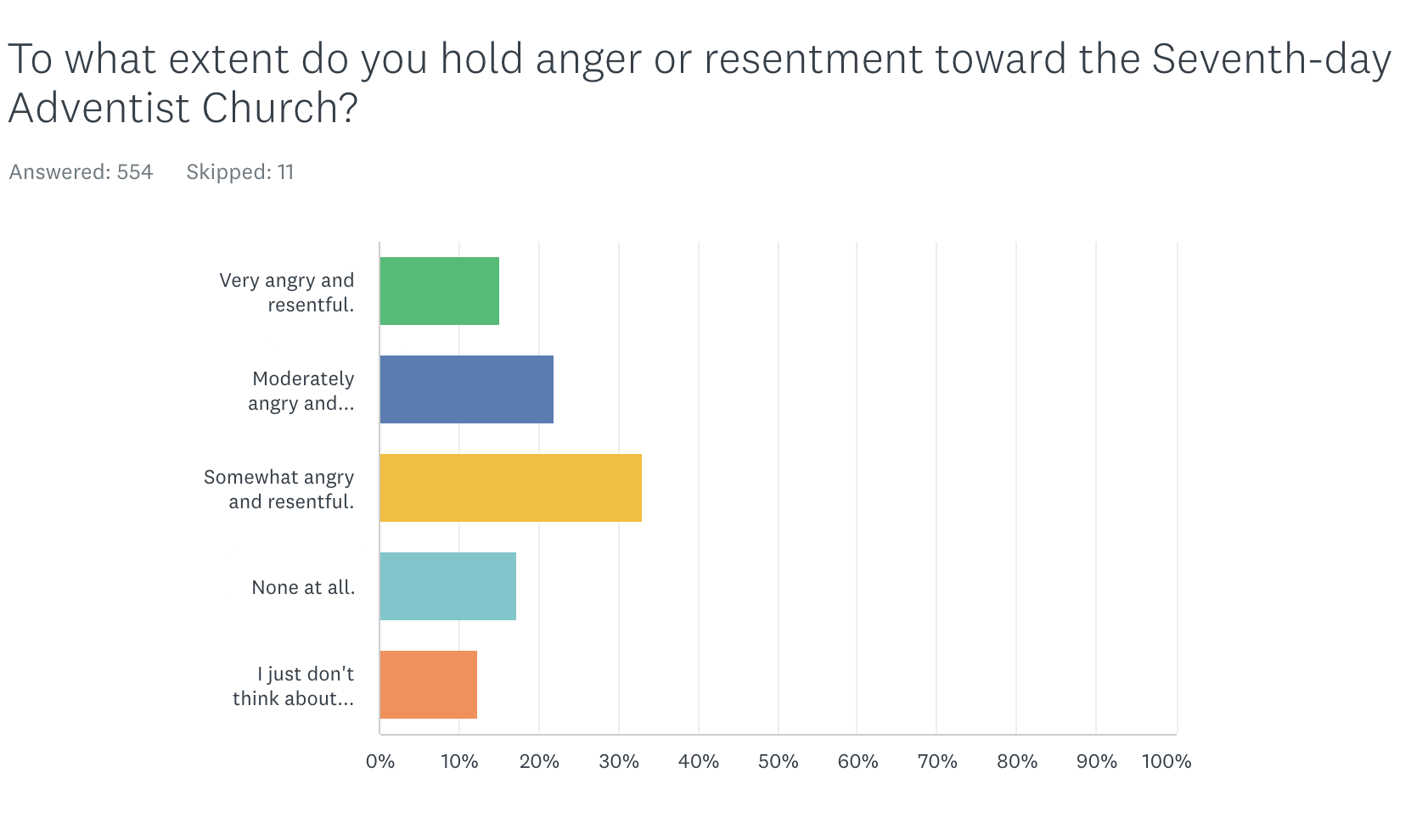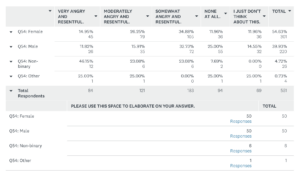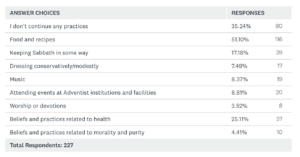“Signs of the Times are Everywhere”
Non-comment about Palestine from SDA leadership
Some of the more progressive still-Adventists in my life have expressed dismay at the milquetoast stand taken by the General Conference of Seventh-day Adventists on Palestine. Here’s the statement, issued on October 7, 2023. So far as I can find through casual web searching, there’s been no update in the six or so weeks since then.
The inability of a church that would have once identified as a social justice movement to now articulate anything other than a ‘thoughts and prayers for both sides’ kind of statement in the face of one of the most consequential international events of recent memory may come as a shock, but should not come as a surprise.
Relevant survey data
Questions 35 and 36 ask respondents to draw the connection between Seventh-day Adventist eschatology (belief that the world will end) and Adventist views on issues like climate and the environment (Q. 35), and then on issues including social justice, racism, women’s rights, etc. (Q. 36).
For Q35, 75.6% of respondents selected, “End-times teachings perpetuate an indifference regarding the climate crisis and other environmental concerns,” while 63.39% selected, “End-times teachings perpetuate an indifference related to social justice issues like racism and women’s rights,” for Q 36.
related to social justice issues like racism and women’s rights,” for Q 36.
As one respondent commented under Q36: “The Adventists want to bring about the end of time. They don’t care about saving the planet or women’s rights etc.”
Or another, also under Q36: “I think a greater impact because as issues become more volatile they see it as prophecy being fulfilled. I don’t think they care more about the issues, just that the volatility shows the “Sunday law” is imminent. Shows we are in end times.”
And finally, this respondent under Q35: “Conservative SDAs preach that the climate crisis will be used to bring the world under one new world order which will ultimately lead to enforced Sunday Worship.”
As I read the narrative comments under questions 35 and 36, it is clear that respondents see a link between climate and social justice issues and indications that the world is about to end.
My truth
These ring true for me. An enduring memory that I have of growing up Seventh-day Adventist, from early adolescence right on through to the end of my teen years, is feeling a sense of anxiety and dread about the “last days.”
I remember as an 11 year-old in the junior tent at Adventist Campmeeting in Michigan, listening to the pastor tell us about the persecution of Christians in communist Latin America (I can’t remember specifically which country). They were lurid, awful, detailed stories that I now understand were completely inappropriate for an 11 year-old audience. Stories of Christians being tortured and killed for their faith. The pastor closed that session by telling us that before Jesus came, we would all be similarly persecuted for our faith, assuming we remained faithful. And I can remember that for months after, I prayed to Jesus that I would not be persecuted that way.
In the Adventist community that I was part of, nearly every global or national event was seen further proof that Satan was running rampant on earth, and literally any day now the Sunday Laws would be passed and the persecution of the “144,000” (us, obviously) would begin. And although my own parents were never so much the wide-eyed looney-bin type, away from home and in the belly of what passed for mainstream Adventism in that time and place, the crazy was constant.
The symbols on the US one dollar bill, the gays in San Francisco, the Challenger exploding in mid-air, race riots, Islam, Communism (or what was left of it in the waning years of the Cold War), 80s metal, HIV/AIDS… all pointed to a sinful world, collapsing under the weight of its own iniquity. Sign that the Second Coming – The Advent – was practically on us. Whether in SDA church school, at church, or in the religious material that I consumed in between, connections between whatever was happening in the world that week and WE ARE IN THE LAST DAYS, were constant. I think it is fair to say that for more or less my first 20 years of life, I was in some way told daily that The Time of Trouble was coming, and that almost everything around me pointed to it.
Non-response to Palestine is not a surprise
For as much as Seventh-day Adventists want to believe that their movement is relevant and impactful in today’s world, they are constrained by their own beliefs about the last days. “Jesus is coming again, and it will be soon,” is the “A” is “SDA.” Jesus is coming, but before He does it’s gonna be bad and there is nothing anyone can do to stop it. Lots of emotional energy is spent unpacking all the signs and digging into how this or that event proves that the Advent is close. This is the lifeblood of every Revelation seminar or revival. On the other hand, what it all means for those living an Adventist life day-to-day is pretty straightforward: The world is literally ending and there’s nothing we can do except wait for it to be over. Batten down the hatches, keep your head down, be prepared to ride out the coming storm.
The responses to Qs 35 and 36 highlight this. Why bother to engage in activism here on earth when, as one respondent put it, “Most people see that any harm will be made right “in Heaven.”
In this light the statement from the General Conference on Palestine is not only predictable, but very much on-brand.


 Follow
Follow


